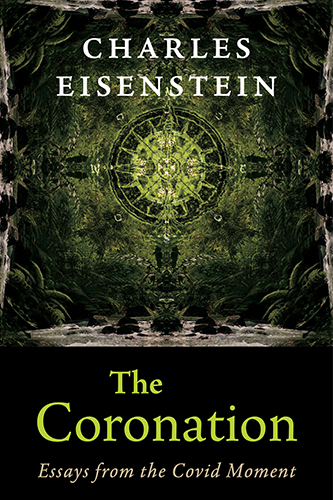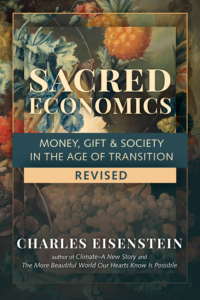Climate — A New Story
Chapters
Chapter 2: Beyond Climate Fundamentalism
The Place Where Commitment Lives
The equation of “green” with “low carbon,” which maps a complex matrix of causes onto a single quantifiable variable, leads us to think that sustainability can mean to sustain life as we know it, life as it has been. It justifies and motivates the operating paradigms of green growth and sustainable development, which are essential to preserving our present economic system with its endless appetite for more resources. For that matter, it allows us to continue seeing the planet as composed of said “resources”—things that are here for us to use—as long as we exploit them in a way that doesn’t generate greenhouse gases. And, crucially, it contributes to an attitude of humanity in the driver’s seat, managing planet Earth like a machine, controlling the inputs and measuring the outputs. It invites a linear response to a nonlinear problem. But Earth is not a machine; it is alive, and it will remain hospitable to life only if we treat it as such.
In coming chapters I will present evidence that the climate effects of deforestation, industrial agriculture, wetlands destruction, biodiversity loss, overfishing, and other maltreatment of land and sea are far greater than most scientists had believed; by the same token, the capacity of intact ecosystems to modulate climate is much greater than had been appreciated. This means that even if we cut carbon emissions to zero, if we don’t also reverse ongoing ecocide on the local level everywhere, the climate will still die a death of a million cuts.
Contrary to the presupposition implied in my aforementioned Google search results, the health of the global depends on the health of the local. The most important global policies would be those that create conditions where we can restore and protect millions of local ecosystems. Today it is often the opposite; for example, global free trade treaties permit corporations to sue governments for lost profits from local environmental protections.
When we cast ecological healing in global terms, our gaze wanders away from the places we have loved and lost, the places that are sick and dying, the places we care about that are tangible and experientially known and real to us. It goes instead to distant times and places, and our local loves become at best instruments toward a larger end.
Why was Stella sad to see her beloved estuary depleted of life? Was it that it no longer grows kelp that will sequester carbon and mitigate climate change? Of course not. If so, it would be no great loss. It could be offset by planting a kelp farm or a forest somewhere else, or perhaps by installing giant carbon-sucking machines in every city. Then Stella would be happy, right?
My friend Seppi Garrett told me how he took his son fishing in the Conodoguinet Creek, his favorite haunt as a boy. To his alarm, he found out that the creek is impaired and people are warned not to let children get into the water. So he thought, “I’ll take him to the Yellow Breeches river instead,” only to discover that it is impaired as well. He said, “Then of course there is the Susquehanna. I feel so sad when I go there and see oil slicks on the water in the places I used to wade chest-deep to go fishing when I was a kid.” Seppi’s grief, indignation, and anger are driving him to become a kind of freelance applied ecologist, part of a movement of people who assist the recovery of damaged areas by accelerating succession, redirecting water, and altering species composition. We need millions of people to do that, to listen closely to land, to develop a relationship with it, and to put themselves at its service. Where does that level of commitment come from? Again I will ask, does the oil slick provoke Seppi’s grief because it signifies fossil fuel burning that generates carbon dioxide?
You can see how the dominant global carbon narrative is not necessary to generate environmental zeal, even for those who accept it as true. All the more, for the climate change skeptics we’ll visit in the next chapter.
I am sure something stirred in you reading Seppi’s words, even if your own special childhood place was the woods not the river. When we transmit our love of earth, mountain, water, and sea to others, and stir the grief over what has been lost; when we hold ourselves and others in the rawness of loss without jumping right away to reflexive postures of solution and blame, we are penetrated deep to the place where commitment lives.
This does not mean we don’t face a global ecological crisis. We do, and it far transcends what we call climate change. However, if everyone focused their love, care, and commitment on protecting and regenerating their local places, while respecting the local places of others, then a side effect would be the resolution of the climate crisis. If we strove to heal and protect every estuary, every forest, every wetlands, every piece of damaged and desertified land, every coral reef, every lake, and every mountain, not only would most drilling, fracking, and pipelining have to stop, but the biosphere would become far more resilient too.






